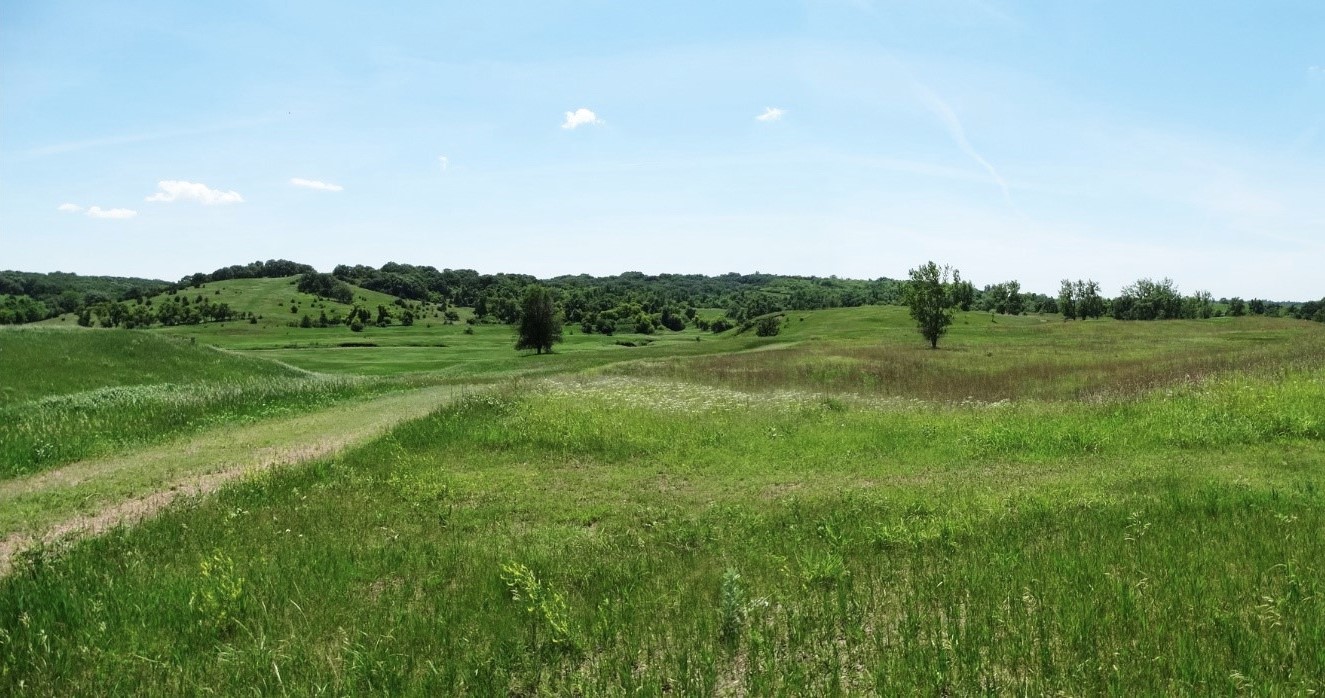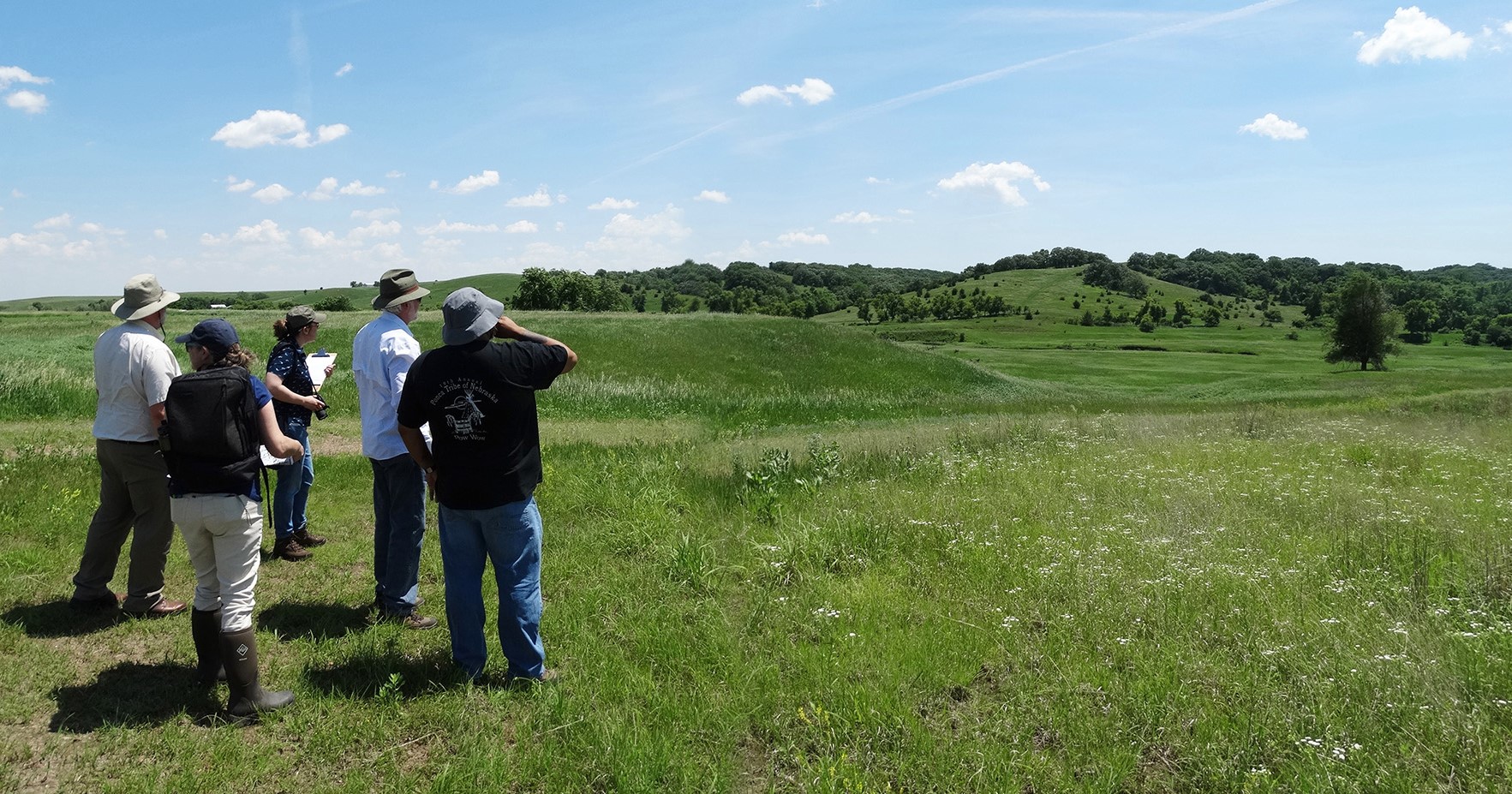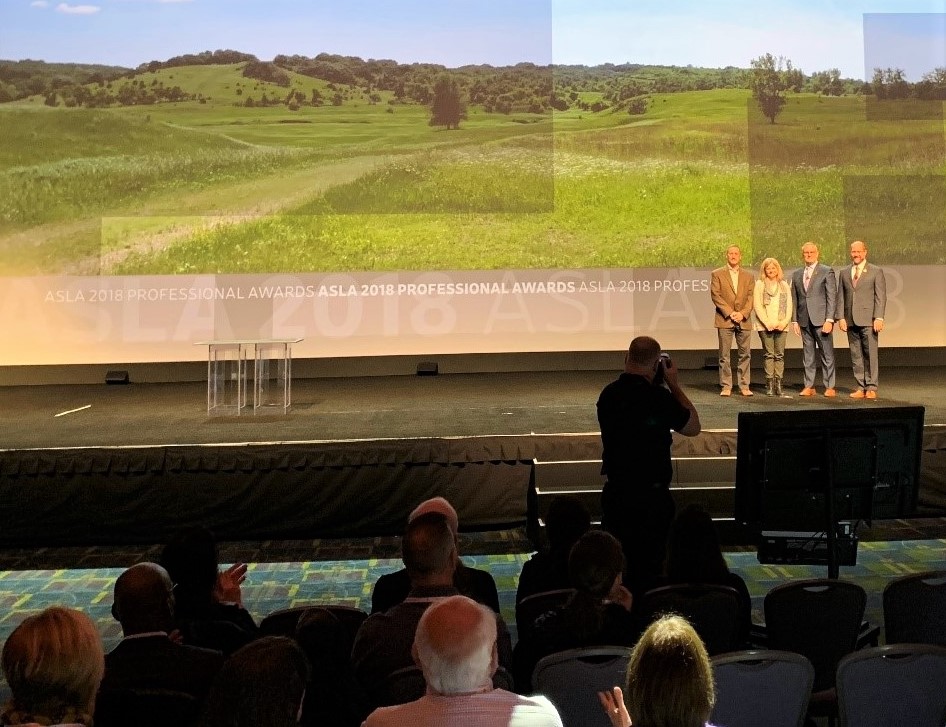The Blood Run National Historic Landmark, straddling the banks of the Big Sioux River along the Iowa/South Dakota border, is the largest-known and most multi-faceted site of the American Indian Oneota tradition.

Named for the iron oxide and red-stained waters of nearby Blood Run Creek, the landmark is a living, breathing documentation of early village ceremony, diet and daily practice. Dotted with visible earthen mounds and retaining a rich and well-preserved archaeological record below ground, Blood Run was officially registered as a National Historic Landmark in 1970, with many American Indian tribes maintaining strong connections to the landscape still today.
Preservation and parkland
The long-term preservation of Blood Run has faced some challenges. Gravel quarrying and devastating looting destroyed large parcels of the area in the late 1930s, with a fair amount of damage continuing with later generations of collectors. Currently, the rapidly growing City of Sioux Falls, less than ten miles from the northern-most boundary of the site, has a sprawling metropolitan population of over 259,000 that—at some point—will require more room for expansion.
For these, and many other reasons, the desire to preserve, protect and honor this site became increasingly apparent. A variety of Tribal representatives—along with the Historical Society of Iowa, the Iowa Natural Heritage Foundation, the National Park Service and many other prominent stakeholders—compiled a unique team of landscape architects and consultants to facilitate the creation of a Blood Run Cultural Landscape Master Plan—and ultimately—the creation of a new 3,880-acre bi-state park.
Creation of a unifying plan
The Master Plan provides a comprehensive framework for the establishment of a park that respects, preserves, protects, and emphasizes the unique heritage of the study area. It serves to strengthen appreciation of regional American Indian heritage, local history and natural resources while fostering understanding, use, and enjoyment through education, interpretation, and compatible recreation.
The plan includes detailed guidance for a wide range of recommendations and a phased approach for implementation. Recommendations include preservation treatments for mounds and other significant sites, interpretive and hiking trails, an educational and curatorial facility, an outdoor educational demonstration area, facilities for group gatherings, picnics, day use, research, camping, and maintenance/ administration. Consideration of long-term resiliency, water quality and cultural connections also resulted in recommendations to restore indigenous plant communities as part of a bio-reserve that may someday re-introduce a bison herd to the area.

Tribal representatives identified areas for sacred activities, which will be cared for—and used—by tribes. Protective measures for these, and other significant sites, were thoroughly defined in the plan. Additionally, park visitor orientation includes education about cues in the landscape to let visitors know when they are in sensitive areas, with interpretive information explaining behaviors that are appropriate and respectful.
MSA provided consulting services to the project as part of a team under the leadership of Quinn Evans Architects to help assess the 3,000-acre study site and further define parameters for restored prairieland, savannas, bio-reserves, demonstration/education zones, sensitive resource trails and preserved woodland areas. In addition, the MSA team helped determine the best placements for elements such as proposed visitor amenities, day-use areas, sacred activities areas, overlooks, observation platforms and canoe/kayak launches along the Big Sioux River.
An award for all people
The Blood Run Cultural Landscape Master Plan received an Honor Award in the Analysis and Planning Category from the American Society of Landscape Architects (ASLA) in 2018. Quinn Evans and MSA were recognized at the President’s Dinner and awards ceremony during the ASLA Annual Meeting and Expo in Philadelphia on October 22, 2018.

